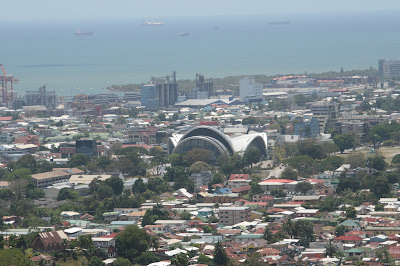The past three months I
have written various blogs about urban spaces: process and changes.
The experiences of writing blogs has increase my intellect and I have
decided to continue the blog and show not only Urban Geography but other issues
of Geography. I was told always to think outside the box and this is what I
did, but also use traditional ideas and data to help compile the blogs.
 |
| Port of Spain |
The three blog I chose to reflect on are: Urban sprawl in Trinidad, http://urbansprawl1.blogspot.com/, Urban geography: The distributions of wealth in the capital city, http://urbangeo9863.blogspot.com/ and Urban transformation in Tunapuna, http://urbanscene2.blogspot.com/.
Each blog is link to urban changes from the past to the future, what they reflected were processes of change which the ordinary man and woman may not have known. These blogs I hope future generations can read and use some the ideas to their advantage.
Urban sprawl in Trinidad by Neisah smith
Ms. Smith blog was informative and more in depth
with selecting an area on urban sprawl, I commented on her use of maps to show
the Northern range area of Mount St Benedict and the effects of
poverty as a reason to the movement.
Urban geography: The distributions of wealth in the capital city
Ms. Isidore blog showed city economy from
a different perspective it was more for the ordinary vs. the wealth
and what affected them in the city of Port of Spain.
Urban transformation in Tunapuna
The second blog I posted was on Tunapuna changes from
a village to urban town. Ms. Ryan did an excellent job by looking
more in to Tunapuna from bottom up while I choose top down approach. Maybe
i should have done both ways but i was studying the change more than how it was
build.


























